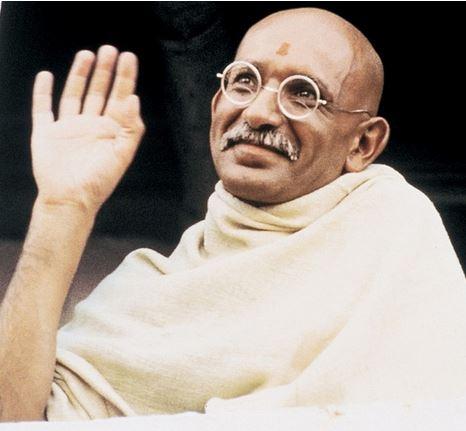Ghandi

Gandhi
Symbol of nonviolence, truth, and spiritual resistance
Definition:
Mohandas Karamchand Gandhi (1869–1948), widely known as Mahatma Gandhi (“Great Soul”), was an Indian political leader, social reformer, and deeply spiritual figure. He became an icon of nonviolent resistance (Ahimsa), truth (Satya), and peaceful self-determination. Gandhi’s life represents the rare fusion of spiritual discipline and political action—making him an enduring archetype of the spiritual activist, who seeks transformation through inner truth rather than external force.
🜁 Biographical Overview
| Life span | 1869–1948 |
|---|---|
| Birthplace | Gujarat, India (Vaishya caste) |
| Education | Law studies in London |
| Key work | Civil rights in South Africa; Indian independence movement |
| Death | Assassinated in 1948 by a Hindu nationalist extremist |
🜂 Core Principles of Gandhi’s Philosophy
| Principle | Meaning |
|---|---|
| Ahimsa | Nonviolence—not only in action, but in thought, word, and intention |
| Satyagraha | “Holding to truth” — spiritual, civil disobedience rooted in moral power |
| Swadeshi | Economic self-reliance—e.g., spinning one’s own cloth as a symbol of freedom |
| Brahmacharya | Celibacy and inner discipline as tools for mental clarity and spiritual strength |
| Sarvodaya | The upliftment of all — universal welfare as a spiritual ideal |
🜃 Spiritual Significance
Gandhi was not a religious dogmatist, but a deeply spiritual seeker who drew from the Bhagavad Gita, Jainism, Christianity, Islam, and Western philosophy. For Gandhi:
-
Truth was God, and spiritual realization came through inner integrity
-
Fasting, simplicity, and silence were tools for spiritual purification
-
He is revered as a modern archetype of the peaceful sage and moral reformer
🜄 Gandhi as Archetype
| Archetype | Expression |
|---|---|
| The Spiritual Warrior | Fights injustice with compassion and truth, not violence |
| The Reformer | Bridges vision and action through ethical conviction |
| The Sage | Lives simply, speaks truthfully, and walks humbly |
| The Martyr | Dies for his values—without hatred or revenge |
🜅 Legacy
-
Inspired global movements: Martin Luther King Jr., Nelson Mandela, Thich Nhat Hanh
-
Symbol of interfaith dialogue, tolerance, and sacred activism
-
Remains one of the most respected figures of the 20th century—not through power, but through moral and spiritual authority
Related Terms:
Ahimsa, Satyagraha, Nonviolence, Truth, Peace Movement, Bhagavad Gita, Karma Yoga, Spiritual Leadership, Self-discipline, Archetypes



